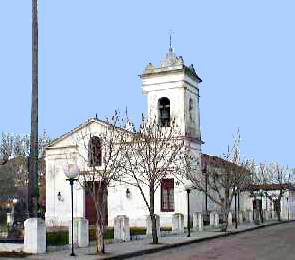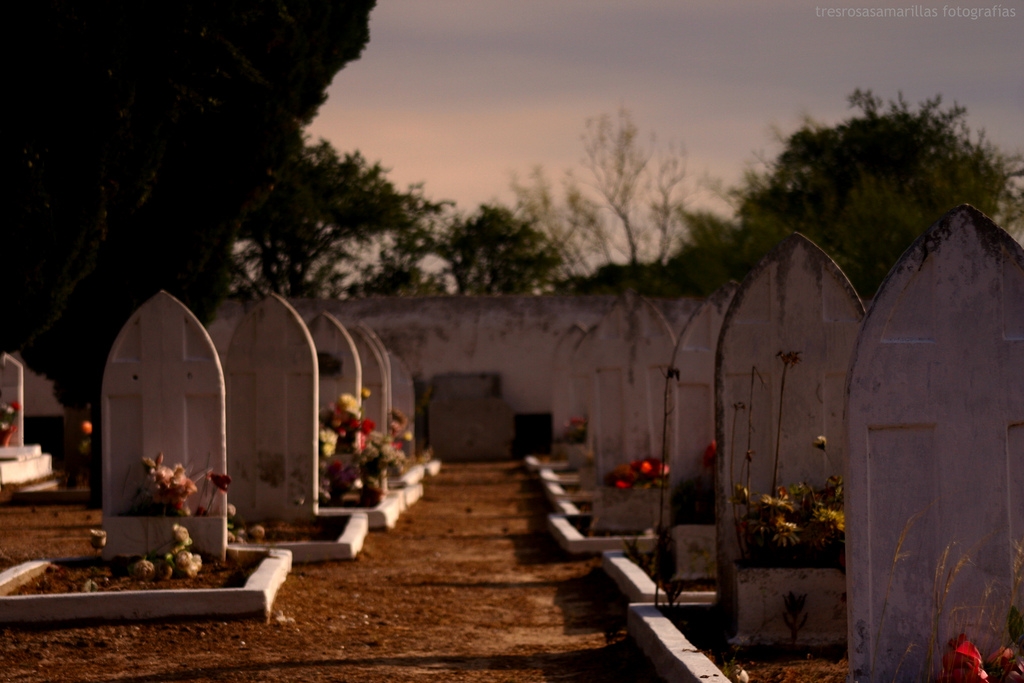|
Vizcaíno Island
Vizcaíno Island () is an island in Uruguay located on the Negro River estuary, at its confluence with Uruguay River. It is bordered by the Negro river to the South, Vizcaíno creek to the east, Uruguay river to the North and Yaguarí creek on the West. Yaguarí creek is a narrow deep channel between Vizcaíno island and Lobos Island, and is the main river mouth of the Negro river. History The first European settlement on the island came when Jesuits founded the mission of Santo Domingo de Soriano on Isla Vizcaino in 1624, though the mission later relocated to the mainland. Economy and population The population began significantly increasing when Pedro Millán began businesses on the island and transferred supplies from other towns. However, the population left the island to escape floods, and they migrated to what is now known as Villa Soriano. They also migrated in order to escape the attacks by hostile indigenous people. Indigenous residents Many native islanders were very ... [...More Info...] [...Related Items...] OR: [Wikipedia] [Google] [Baidu] |
Uruguay
Uruguay (; ), officially the Oriental Republic of Uruguay ( es, República Oriental del Uruguay), is a country in South America. It shares borders with Argentina to its west and southwest and Brazil to its north and northeast; while bordering the Río de la Plata to the south and the Atlantic Ocean to the southeast. It is part of the Southern Cone region of South America. Uruguay covers an area of approximately and has a population of an estimated 3.4 million, of whom around 2 million live in the metropolitan area of its capital and largest city, Montevideo. The area that became Uruguay was first inhabited by groups of hunter–gatherers 13,000 years ago. The predominant tribe at the moment of the arrival of Europeans was the Charrúa people, when the Portuguese first established Colónia do Sacramento in 1680; Uruguay was colonized by Europeans late relative to neighboring countries. The Spanish founded Montevideo as a military stronghold in the early 18th century bec ... [...More Info...] [...Related Items...] OR: [Wikipedia] [Google] [Baidu] |
Uruguay River
The Uruguay River ( es, Río Uruguay, ; pt, Rio Uruguai, ) is a major river in South America. It flows from north to south and forms parts of the boundaries of Brazil, Argentina, and Uruguay, separating some of the Argentine provinces of La Mesopotamia from the other two countries. It passes between the states of Santa Catarina and Rio Grande do Sul in Brazil; forms the eastern border of the provinces of Misiones, Corrientes, and Entre Ríos in Argentina; and makes up the western borders of the departments of Artigas, Salto, Paysandú, Río Negro, Soriano, and Colonia in Uruguay. Course The river measures about in length and starts in the Serra do Mar in Brazil, where the Canoas River and the Pelotas River are joined, at about above mean sea level. In this stage the river goes through uneven, broken terrain, forming rapids and falls. Its course through Rio Grande do Sul is not navigable An unusual feature of the Uruguay River is a submerged canyon. This canyon fo ... [...More Info...] [...Related Items...] OR: [Wikipedia] [Google] [Baidu] |
Río Negro (Uruguay)
The Río Negro (, ''Black River'') is a river in southern Brazil and central Uruguay. It originates in the southern highlands of Brazil, just east of Bagé, and flows west across the entire width of Uruguay to the Uruguay River. The course of the Río Negro across Uruguay effectively divides the south of the country from the north. The Río Negro's principal tributaries are Yí River and Tacuarembó River. The river is dammed near Paso de los Toros, creating the Rincón del Bonete Reservoir, also called the Gabriel Terra Reservoir or the Rio Negro Reservoir. With a surface area of about , it is the largest reservoir in Uruguay and an installed capacity of 160 MW. Downstream from the Rincón del Bonete Reservoir, there are two more dams, the Baygorria Dam and the Constitución Dam at Palmar, [...More Info...] [...Related Items...] OR: [Wikipedia] [Google] [Baidu] |
Lobos Island (Rio Negro)
Lobos (Spanish: Isla de Lobos, pronounced �izla ðe ˈloβos is a big island in Uruguay, at the confluence of Negro River (Spanish: Río Negro) and Uruguay River.There is another Isla de Lobos in Uruguay, on the Atlantic Ocean south from Punta del Este, Maldonado Department, named after Sea lions. Politically it belongs to Rio Negro department. Up to the 19th century, the island was actually three islets, the largest called Vizcaíno, same as the island across the . Lobos and Vizcaino Island were the debarkation site of the first bovine herd in the Eastern margin of the Uruguay River. In 1611, Hernando Arias de Saavedra (Hernandarias) left heifers and bulls for breeding, and repeated the action in 1617. These herds rapidly propagated originating Uruguay present export quality rodeo. It also had an important role in the foundation of Villa Soriano, the first European settlement in Uruguay. Origin of name The island name Google maps erroneously names this island as Lobes com ... [...More Info...] [...Related Items...] OR: [Wikipedia] [Google] [Baidu] |
Santo Domingo De Soriano, Villa Soriano
The Chapel of Saint Dominic Soriano ( es, link=no, Capilla de Santo Domingo de Soriano) is a Roman Catholic church building in Villa Soriano, Soriano Department, Uruguay. History Santo Domingo Soriano was one of the oldest European settlements in the colonial Banda Oriental Banda Oriental, or more fully Banda Oriental del Uruguay (Eastern Bank), was the name of the South American territories east of the Uruguay River and north of Río de la Plata that comprise the modern nation of Uruguay; the modern state of Rio Gra ..., dating to 1624. At that time it had a very humble chapel. The present building was constructed much later, but nevertheless constitutes a historic landmark. It features the only articulated image of Jesus Christ in Uruguay. This chapel is annexed to the Parish of Dolores. [...More Info...] [...Related Items...] OR: [Wikipedia] [Google] [Baidu] |
Villa Soriano
Villa Soriano is a town in the Soriano Department of Uruguay. Historically, it was also known as Santo Domingo de Soriano. It had acquired the status of "Villa" (town) before the Independence of Uruguay. Location It is located on the northwest end of Route 96, on the south bank of the river Río Negro, before it discharges into Río Uruguay. History In 1624, a Franciscan Mission established a village for the indigenous tribes of the area named Santo Domingo de Soriano. It constituted the first permanent European settlement on Uruguayan soil, predating the foundation of Colonia del Sacramento by more than fifty years. It was moved to its current location in 1708. The construction of its church began in 1751. The town has strong associations with General José Gervasio Artigas, who is honoured by Uruguayans as the 19th century liberator of the country. Population In 2011, Villa Soriano had a population of 1,124. Places of worship * St. Dominic Soriano Chapel (Roman Catholic ... [...More Info...] [...Related Items...] OR: [Wikipedia] [Google] [Baidu] |
Internet Archive
The Internet Archive is an American digital library with the stated mission of "universal access to all knowledge". It provides free public access to collections of digitized materials, including websites, software applications/games, music, movies/videos, moving images, and millions of books. In addition to its archiving function, the Archive is an activist organization, advocating a free and open Internet. , the Internet Archive holds over 35 million books and texts, 8.5 million movies, videos and TV shows, 894 thousand software programs, 14 million audio files, 4.4 million images, 2.4 million TV clips, 241 thousand concerts, and over 734 billion web pages in the Wayback Machine. The Internet Archive allows the public to upload and download digital material to its data cluster, but the bulk of its data is collected automatically by its web crawlers, which work to preserve as much of the public web as possible. Its web archiving, web archive, the Wayback Machine, contains hu ... [...More Info...] [...Related Items...] OR: [Wikipedia] [Google] [Baidu] |
Ministry Of Tourism (Uruguay)
The Ministry of Tourism of Uruguay (MINTUR) is a ministry of the Government of Uruguay that is responsible for guiding, stimulating, promoting, regulating, researching and controlling tourism and activities and services directly related to it. It is also responsible for generating the conditions for Tourism to be accessible, planning the development of training and training in this economic activity, and promoting the development of infrastructure and accessibility conditions. This department of government promotes in the tourist activity the approaches of gender, ethnic-racial, sexual diversity, disability. The Ministry is headquartered in the Rambla 25 De Agosto in Ciudad Vieja, Montevideo. The current Minister of Tourism is Tabaré Viera, who has held the position since August 23, 2021. Tourism is the second most important economic activity in the country, after livestock. The Ministry acts under the motto "Uruguay Natural". History Creation The Ministry of Tourism was cr ... [...More Info...] [...Related Items...] OR: [Wikipedia] [Google] [Baidu] |
ResearchGate
ResearchGate is a European commercial social networking site for scientists and researchers to share papers, ask and answer questions, and find collaborators. According to a 2014 study by ''Nature'' and a 2016 article in ''Times Higher Education'', it is the largest academic social network in terms of active users, although other services have more registered users, and a 2015–2016 survey suggests that almost as many academics have Google Scholar profiles. While reading articles does not require registration, people who wish to become site members need to have an email address at a recognized institution or to be manually confirmed as a published researcher in order to sign up for an account. Members of the site each have a user profile and can upload research output including papers, data, chapters, negative results, patents, research proposals, methods, presentations, and software source code. Users may also follow the activities of other users and engage in discussions with th ... [...More Info...] [...Related Items...] OR: [Wikipedia] [Google] [Baidu] |
Baradero
Baradero is the oldest town of Buenos Aires Province, Argentina, being founded in 1615. It is the administrative centre for Baradero Partido. Geography It is located on the bank of the Baradero River which is a tributary of the Paraná River The Paraná River ( es, Río Paraná, links=no , pt, Rio Paraná, gn, Ysyry Parana) is a river in south-central South America, running through Brazil, Paraguay, and Argentina for some ."Parana River". Encyclopædia Britannica. Encyclopædia Br .... Gallery File:Rio-baradero.JPG, View of the Río Baradero File:Estación de trenes Baradero 2.JPG, Baradero station External links * *Portal de la Ciudad de BaraderoBaradero*BaraderoDigital*Festival de Baradero*Web de Baradero y su Festival*Baradero Municipality*Baradero - official site Populated places in Buenos Aires Province Populated places established in 1615 1615 establishments in the Spanish Empire {{BuenosAiresAR-geo-stub ... [...More Info...] [...Related Items...] OR: [Wikipedia] [Google] [Baidu] |






